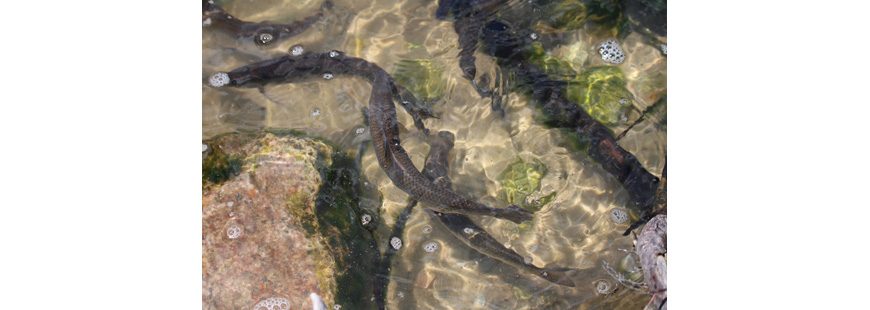This article was originally published in the Wild Oceans Horizon Summer 2024 newsletter and is reprinted with permission.
In the Winter 2008 edition of our newsletter, then called the NCMC Marine Bulletin, we published a story titled “River Herring Disappearing”. In this article, we suggested that at-sea bycatch was the likely culprit for the disappearance of two critical river herring species, alewife and blueback herring. Well, at its August 6th meeting, the Atlantic States Marine Fisheries Commission’s Shad and River Herring Management Board heard the results of the latest River Herring Benchmark Stock Assessment that provided evidence to support exactly what we had hypothesized back in 2008.
To expand, researchers sought to answer several questions including identifying the current status of river herring populations and comparing that to historic levels, determining mortality rates and abundance trends, and examining the impact of habitat loss and restoration, bycatch, and fishery limits. Using abundance and mortality information from 84 rivers, representing 105 stocks of river herring, the reality the researchers found presents a sobering picture. Their assessment revealed that the coastwide populations of river herring are not only depleted relative to historic levels and mortality was too high to sustain populations, but also that population levels are near historic lows. Specifically, total removals of river herring from all sources are at “approximately 4 percent of the reported landings compared to the height of the directed fishery in the 1950s and 1960s”. While some of this decline could be due to dams and river habitat loss–which the reversal of could help rebuild populations–during the meeting, researchers presented evidence that identified bycatch as being the bigger issue.
The data provided shows there are differing trends between the Northern New England Coast (where there is a seasonal prohibition against midwater-trawling) and the Southern New England and Mid-Atlantic regions where researchers identified limited-to-no population increases despite similar investments in dam removal and habitat restoration efforts to the Northern New England region. This is likely because the assessment found that significant amounts of river herring are caught as incidental catch (bycatch) in fisheries targeting other species like Atlantic herring and mackerel. Researchers also called for new methods of data collection to establish biologically-based incidental catch caps for river herring to aid in their recovery.
During the summer, I had the privilege to meet with river herring stewards in Connecticut at inshore rivers where river herring used to run. Currently, river herring do not support any Connecticut fisheries and taking them has been prohibited since 2002 when a complete moratorium was established. River herring stewards shared with me how their efforts to restore rivers—the same actions taken in the Northern New England region—had not resulted in their river herring populations returning. The difference they see points to the time/area closures for midwater trawlers in the North.
Unless we are able to establish more protections for river herring while they are at-sea, treasured and economically valuable river herring populations will remain at historically low levels, especially those in Southern New England. Wild Oceans will continue to advocate for new protections for river herring that will address at-sea catch of river herring through the New England Council’s ongoing development of Amendment 10 to the Atlantic herring fishery management plan. We will also continue to lead in research to identify emerging threats to our most important coastal ecosystem resources, and in developing effective advocacy approaches that result in change. We must do everything we can to prevent our next story from being titled “River Herring Disappeared”.


